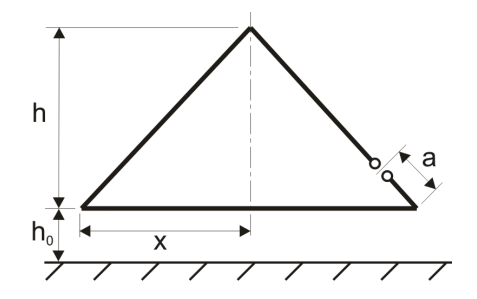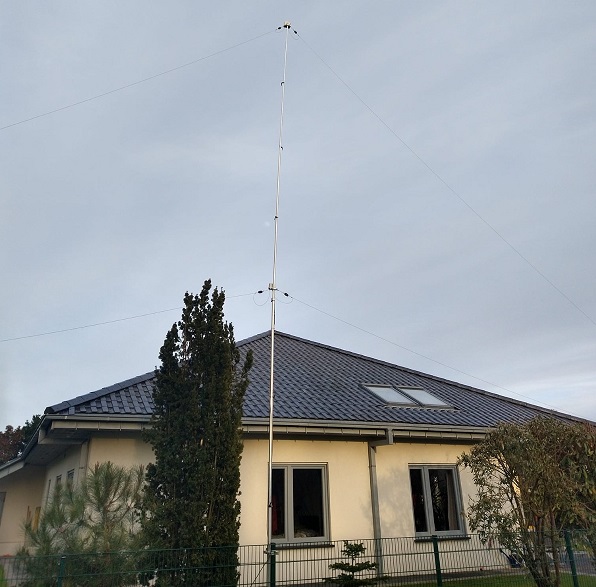Vertical Delta Loop
Inspired by:
ZS6MGD: http://www.marcspages.co.uk/tech/2102.htm
HFLINK (search for BBTD Inverted V Delta Wing): http://hflink.com/antenna/
DF5JL: http://df5jl.darc.de/t2fd
If you follow the links, you will see that these antennas follow the concept of the T2FD, what means they are terminated by a resistor. This was my first setup, teminated at the top and fed in the middle. This worked somewhat, but I was not really satisfied. So I have transformed this setup to a classical Delta Loop, that is fed at the edge based on the script of DL4AAE.

Mechanical Dimensions:
Mast hight: 9m (h)
Base space: 28m (2 times X)
Feed point: 2m (a)
Hight above ground: 3m (h0)
Circumference: 55m
Due to the fact that a tuner (in my case a SGC SG-230) is connected to the feed point, the size does not really matter. Get as much wire into the air as possible. As long as the wire length is equal or greater than one wavelength at the lowest working frequency it works with a quite good efficency.
With a circumfence of 55m, there is for sure a performance drop on 80m, but it works much better than expected. 160m can only be used for FT8.
Wire:
Anything will do as long as it survives the mechanical forces and does not have an excessive resistance. Since I do not have the space to do additional guying of the mast, I have chosen DX-WIRE Premium since it has the strength of a guy wire, good electrical characteristics and is nearly invisible.
As you can see in below picture, the base of the loop is not flat. This needed to be done because the antenna wire is the guy wire for the mast. With this construction winds up to 100 km/h are still OK. The best would be to guy the mast from the other sides as well, but this is not possible in my location.

Conclusion:
The antenna works very good on 20 and 40m, the main contest bands. On 80m the TX performance in SSB is for sure below a full size dipole, but OK for my needs. Due to the nature of a closed loop , the antenna is very quiet compared to dipole. So doing CW is a real pleasure now and SSB signals are much better to understand due to the better signal to noise ratio. It is expected that digital modes will also benefit from that.